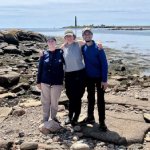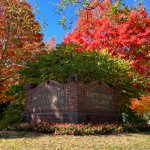
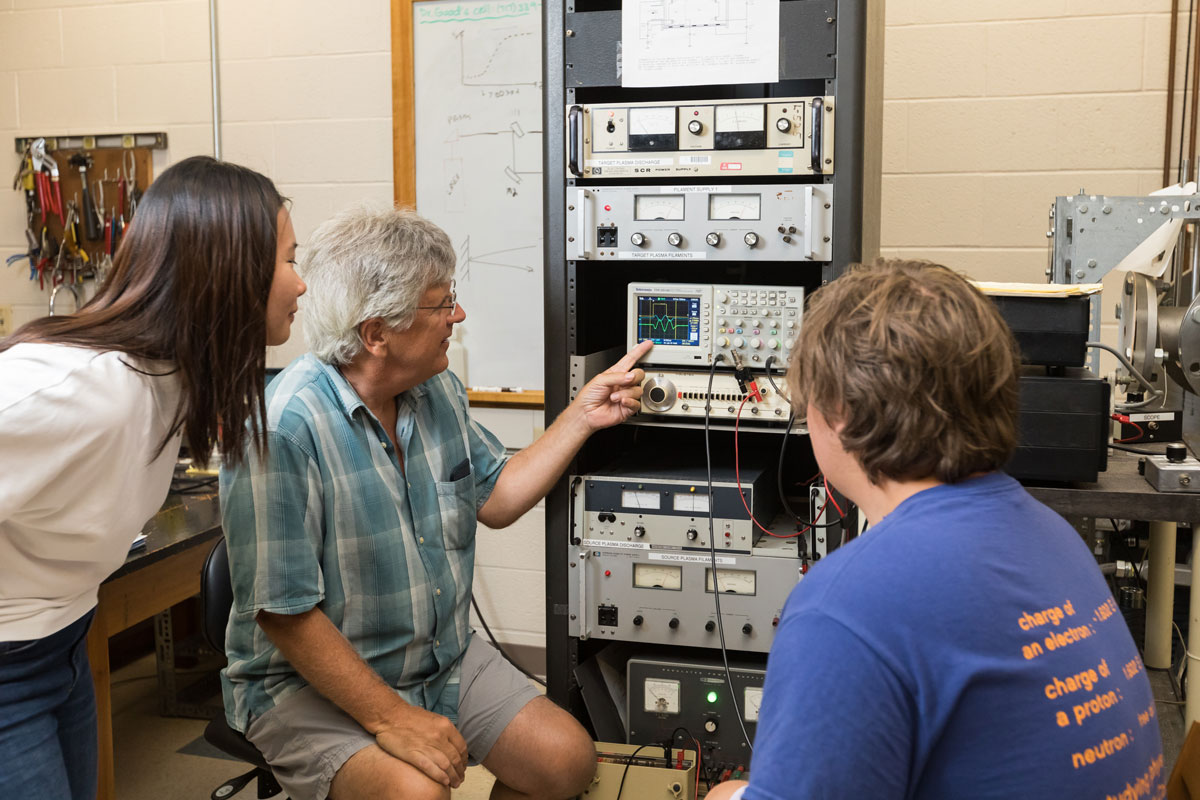
For aspiring and current majors in science, technology, engineering, and mathematics (STEM), it’s beneficial to have the ability to conduct research that aligns with your interests and career aspirations.
The Cross-Disciplinary Science Institute at Gettysburg College, also known as X-SIG, provides that opportunity to students, creating a community of scholars and equipping them with the necessary skills to answer science’s most pressing questions.
From studying the ways in which animals use vibrations to map their world to examining mental health and self-representation, X-SIG students integrate multiple disciplines through innovative research projects. Upon completion of the program, students are prepared to be active and connected members of the scientific community.
This past summer, chemistry and physics double major Rikard Bodin ’20 and physics major Neng Yin ’20 worked with Physics Prof. Tim Good on plasma research. Together, they upgraded and installed the Pickets Charged Plasma Device—an instrument named after the shape of its picket fence magnetic field, while also drawing upon the history and Pickett’s Charge in the Battle of Gettysburg.
Inspired by the X-SIG program, Bodin and Yin are integrating the now-operational device into their individualized research projects as part of their physics capstone experience.
The X-SIG fellows share their takeaways from the program, including the importance of student-faculty research at Gettysburg College.
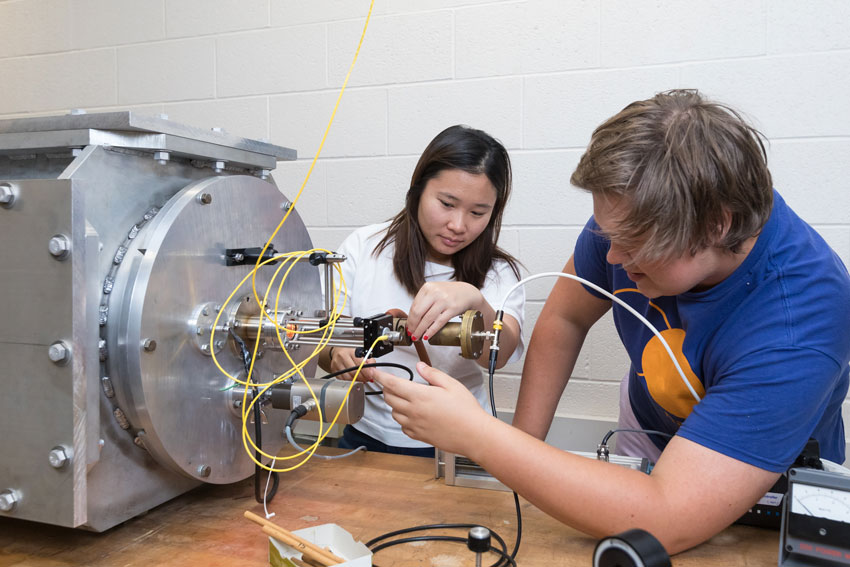
How would you describe the Pickets Charged Plasma Device?
Rikard Bodin: “Plasma is the fourth state of matter and can be thought of as hot gas. Hot gas has negative and positive charge in equal parts. When you look at the sun, what you are looking at is a big ball of plasma. This ‘ball of plasma’ is full of energy that causes it to burn brightly. In the Pickets Charged Plasma Device, we create plasma in a contained device that lets us study its properties. While the sun is largely made of hydrogen, our plasma is trapped argon. While the sun is white in color, our argon plasma is a light lilac color, and instead of a ball of plasma like the sun, ours just fills the container, confined by the magnets inside.”
What have you learned from other experiences that you could apply to this project?
RB: “As a chemistry and physics double major, I’ve spent my entire time at Gettysburg seeing how intertwined the two fields really are. Through this, I’ve been able to apply my knowledge of chemistry in the physics lab. The ability to approach problems from different perspectives definitely increases your ability to solve problems.”
Neng Yin: “Last summer, we went to West Virginia University, which also has a group of scientists studying plasma. The leader of the group, Prof. Scime, helped the University of Tromsø in Norway build their plasma chamber, which is where I went to study abroad last fall. While there, I had a chance to go visit the plasma lab and introduce some of our research results to the leading professor there.”
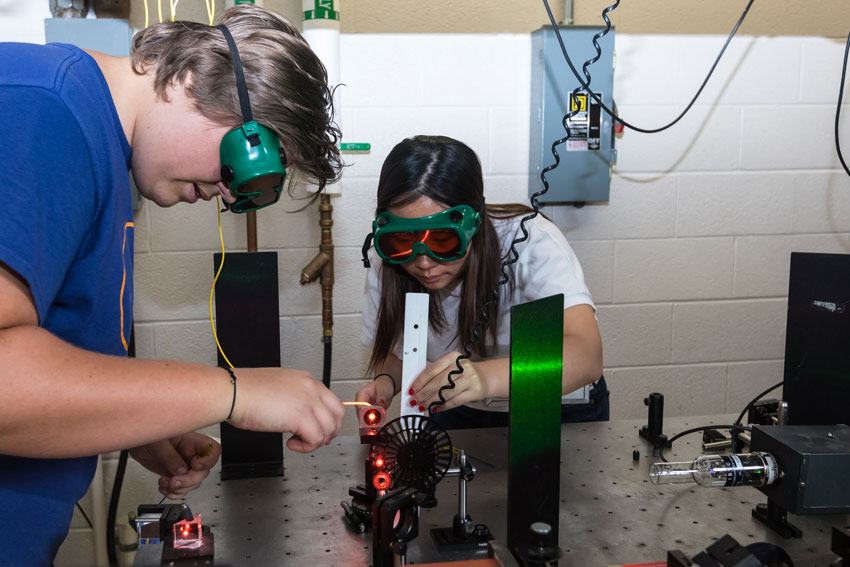
Reflecting on your work this past summer, what is your biggest takeaway?
RB: “I was once told that I wouldn’t like being a physicist because it was too upsetting when the experiment didn’t work. In reality, one of the best things about being a physicist is that experience. Having to really apply yourself to identifying and fixing the problem is a crucial step. If it worked the first time, odds are it’s been done before. The fact that it fails the first 100 times makes the one time it does work all the more gratifying. Working in Dr. Good’s lab has taught me how to take failure in a positive light and view it as room for improvement.”
How would you describe the X-SIG program?
NY: “This program is about thinking like an engineer and designing projects like a scientific researcher. Knowing how to understand the information that we collect is also an important aspect of the program that is necessary for success in any experiment.”
RB: “Being in the X-SIG program is my favorite thing about going to Gettysburg College. Larger schools in the country aren’t able to provide the same kind of opportunities to their students and having actual research under our belt distinguishes us from other applicants for graduate schools. You also gain useful lab experience as well as scientific communication skills, which is one of the most important parts of being a scientist.”
What advice would you give students who are considering the X-SIG program?
RB: “Even if you aren’t sure if you want to go to graduate school or even become a scientist, the skills you learn and the experience of being on the forefront of science is an amazing opportunity that everyone should experience. Begin talking to your professors as soon as possible. It’s fine to begin a conversation asking, ‘What kind of research do you do?’ Not only is it good for you to hear about the different kinds of research available, but it lets the professors see how passionate you are.”
NY: “In X-SIG, academic social life and interactions are also a part of your project, so any students who are wondering what scientific research is like or thinking about pursuing a career in research should sign up for the program.”
According to Good, the X-SIG program allows you to “get a running start” on your future. Express interest, visit faculty, shadow research projects, ask former students about their experiences, and attend the poster session in the fall. All this and more allow you to experience the first-hand enthusiasm of the program.
Learn more about how you can get involved with the X-SIG program.
By Giacomo Coppola ’22
Photos by Shawna Sherrell
Posted: 10/11/19
